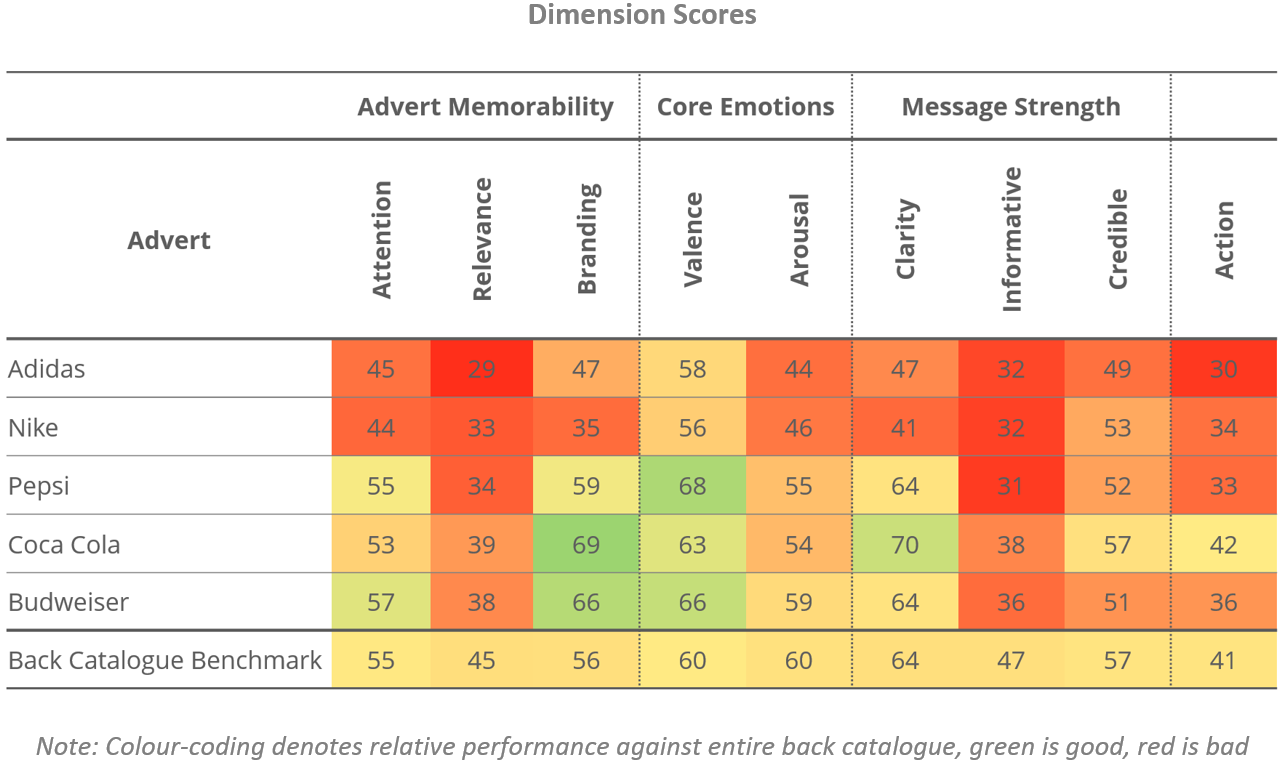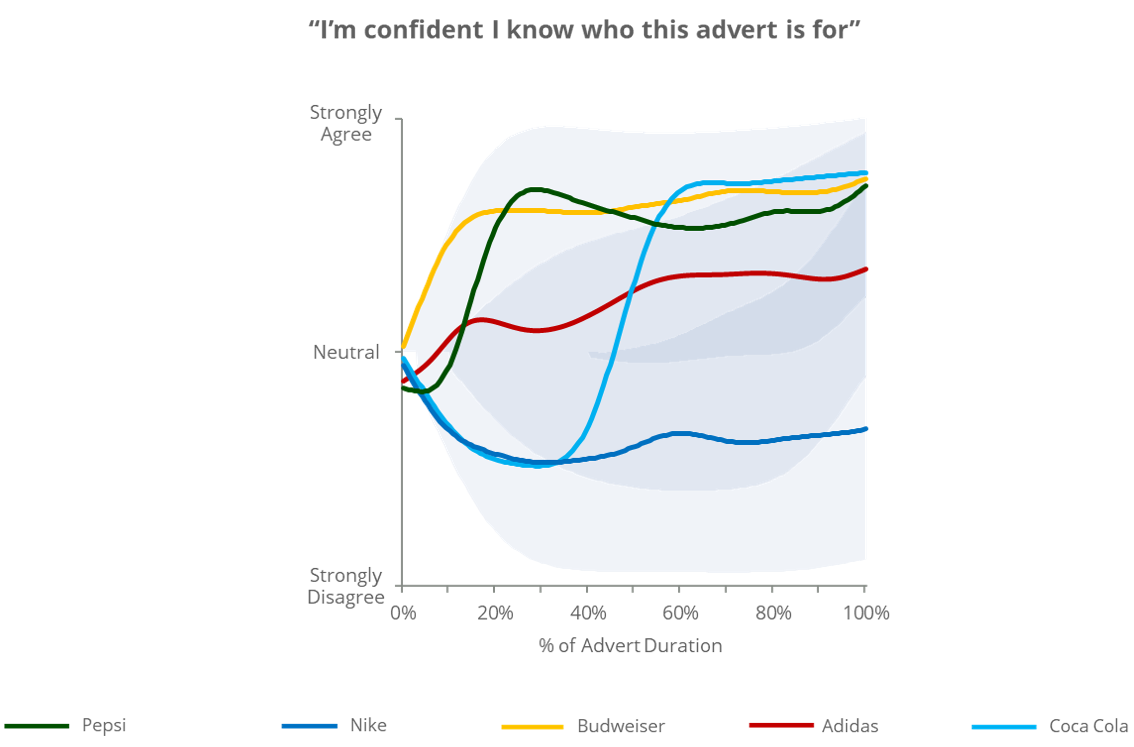World Cup TV Ad Test
Posted: 06/07/2018

It’s World Cup time again and for most this means exciting evenings of sport and patriotism. But for global brands it also represents the year’s largest advertising opportunity. Given the scale of the viewership across a wide range of geographies for over 250 hours of coverage, it’s an opportunity they can’t afford to squander.
We ran our TV Ad Test to measure the effectiveness of five creatives from advertising giants Adidas, Nike, Pepsi, Coca-Cola and Budweiser. The Dectech Ad Test was created in-house, using academic research and extensive in-house R&D to build a robust, cognitive framework that can provide tailored output to our clients. The framework includes 9 dimensions covering Advert Memorability, Core Emotions and Message Strength, with quantitative metrics supported by qualitative insights.

Adidas, Nike and Pepsi use famous faces from football and beyond in their creatives, but not all are getting their money’s worth. These brands have targeted football fans but to maintain Attention in a general audience, a key driver of recall according to our research, an ad must have a storyline instead of relying solely on these stars.
Pepsi achieve a respectable Attention score, likely due to the light-hearted theme appealing to a mass market audience, regardless of their familiarity with the footballers. On the other hand, Budweiser achieve the highest levels using fans as the protagonists and regularly shifting between interesting environments.
Whilst football icons have been used to try and build excitement about the World Cup, this is also not reflected in the Core Emotions scores. Arousal measures how exciting an ad is while Valence measures how happy it is. The chaotic nature of the Adidas and Nike ads failed to generate Arousal, another driver of recall, and the dark setting of the Adidas creative may have been the culprit in its case. The two ads performed better on Valence by using lively music and passionate narration. However, Pepsi, Coca Cola and Budweiser achieve much higher Valence scores with vibrant settings and cheerful plots.
Moreover, the two sports brands then perform particularly poorly in Branding. This is a crucial metric for brand-led campaigns such as these, as our research has found that strong Branding drives brand liking amongst the audience. The Nike ad is the weakest of the group, not placing sufficient focus on brand or industry cues.
The timeline chart below shows the strength of Branding as the ads progress, highlighting how poor the Nike creative is throughout. The Budweiser timeline is an example of very effective Branding. The ad opens with the clearly labelled product, and brand cues continue to appear throughout. Pepsi and Coca Cola both take slightly longer to increase, but then use logos, colours and products to reach very strong levels.

Clarity, also linked to brand liking, is much higher for the beverage ads, which provide a clear, relevant message to the wider audience – “drink this while you watch the World Cup”. This is particularly true for the Coca Cola creative, and the clear call to action is also reflected in its strong Action score. The lack of obvious product placement or call to action in the sports brands’ ads leads to a weak comprehension of the ad’s take-away.
All five ads score low on Relevance and Informative and given that they are tailored around a specific event this is perhaps more forgivable. However, brands need to bear in mind that Relevance drives intention to purchase and therefore they should aim to appeal to as wide an audience as is feasible within their customer targeting strategy.
Overall, the results show that an effective World Cup creative must connect the event with both the audience and the brand, by eliciting positive emotion with vibrant settings and delivering a clear storyline supported by plentiful brand cues. Coca Cola and Budweiser have achieved these objectives, so congratulations to their respective agencies Mercado McCann and Anomaly. Adidas most precisely targeted football fans, and though this may be effective within that specific group they have missed an opportunity to drive recall, brand liking and intention to purchase amongst an open market audience.